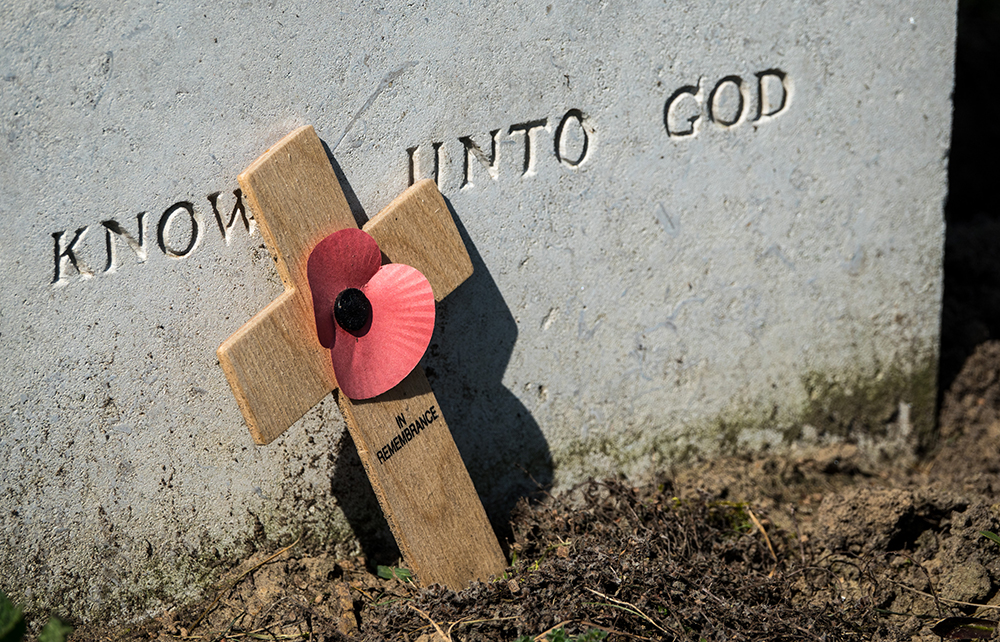This profound and emotion-laden book ends, as did the first world war, in hope, and no little catharsis. It begins, though, in overpowering grief, not just that of the Western Front’s bereaved, but the author’s. In 2016 Sir Anthony Seldon’s wife died of cancer, diagnosed five years earlier. They had met at Oxford, she was ‘dark-eyed and beautiful, preternaturally clever and knowing’, and when they married, his father, whose own people had been refugees from the pogroms in Ukraine, was delighted that he’d found a Jewish girl. After her death, which ‘ripped me in two’, writes Seldon, he threw himself into his work – his prodigious writing and the vice-chancellorship of Buckingham University, which his father had helped found. It was no remedy, however, and in 2020 he left, including the tied cottage. For the first time in most of his adult life he found himself without a wife, job or home. He turned for solace to the Western Front.
‘For every step I would be taking on the 1,000 km walk, ten people had been wounded or killed’
It seems a curious choice at first glance. I have visited the Western Front many times, though not nearly as often as Seldon, who during his teaching career led more than 100 parties to see what remains of the trenches and the immaculately tended cemeteries. I myself always tried to stay clear of the cemeteries, not to avoid being reminded of the ultimate price of my trade – the army takes its recruits there to see exactly what unlimited liability may mean – but because they make me angrier still at the war’s generalship, and indeed with those who seek to rehabilitate the reputation of Douglas Haig in particular. What competent military commander could, in his instructions before the Somme offensive, rule out reconnaissance, as Haig did: ‘The advance of isolated detachments should be avoided. They lead to the loss of the boldest and best without result… Advance should be uniform.’ And thus, advancing uniformly, they were cut down – some 60,000 on the first day, a third of them killed. I recall the late John Keegan saying how, after visiting France for the 75th anniversary of the Armistice, he had to take to his bed for days, so moved was he by those many thousands of headstones – silent witnesses, and so young.
Seldon had a cause, however. Ten years ago, while writing Public Schools and the Great War, his co-author David Walsh showed him a letter from a Wykehamist to his former headmaster. It made a deep impression on Seldon, then headmaster of Wellington – that most military of schools (in origin at least). In early 1915, Douglas Gillespie, aged 25, wrote from the trenches near Armentières where, just a few months before, his younger brother Tom had died:
If I survive the war, I would like to see created a tree-shaded path from the Vosges mountains to the North Sea. I would like to send every man, woman and child in western Europe on pilgrimage along the via sacra, so that they might think and learn about what war means from the silent witnesses on either side.
The Spectator declared: ‘We must realise this young soldier’s noble vision.’ But Gillespie was killed a few months later, and nothing came of it. Until, that is, Seldon wondered if, in the run-up to the war’s centenary, its time had at last come. With others he began the mission to create the Western Front Way, and after the death of his wife decided to walk the entire route himself, as the pathfinder for much of it: 1,000 km, ‘a million steps through soil in which ten million bled, often to their deaths. For every step I would be taking, ten people had been wounded or killed.’
The book is both a chronicle and meditation on that pilgrimage-reconnaissance, as well as an oblique history of the war. Seldon is first and foremost a historian, and seemingly as happy with the operational details as with the human and literary which make the book compelling, in places so intensely moving that I was forced to put it down and go out for another walk, on Salisbury Plain, where many of the men had trained. Edward Thomas’s all too brief service at the front, for example, and his wife Helen’s desperate premonition and then grief, are woven into the odyssey with rare impact.
It was a masterstroke to walk from the Swiss border to the Channel rather than the more obvious other way round. So we begin with Alsace and all its ethnic ambiguity, where the fighting in 1914 tends to get overlooked in the concentration on the great wheeling movement through Belgium. There are, indeed, many layers to this book, many cultural references, insights, thoughts and intriguing speculation.
The journey brings Seldon unexpected renewal and fulfilment, even perhaps the prospect of peace. He proposes to the woman who has helped to organise it and support him throughout, ‘a devout Christian’, who on the phone one night when he fears death having been blue-lighted to hospital with dehydration, prays aloud until the crisis is over. The last words of the book are from St Matthew. The journey evidently continues.
All profits go to the Western Front Way charity.






Comments